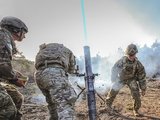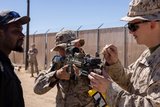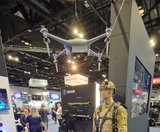War may enter new phase as US outlines plans to train Ukrainians to operate F-16 jets
The Netherlands and Denmark have announced their intentions to make F-16 aircraft from their fleets available to Ukraine. (Photo: USAF)
The training plan means that within the next 12 months the Russian air force is likely to be facing off against fourth-generation F-16 fighter aircraft, perhaps even as early as a 2024 spring or summer offensive, a situation which would remove one of Russia’s greatest advantages.
A key aspect of Russia’s ability to withstand the current Ukrainian offensive is its dominance of the skies and facing off against F-16s with advanced weapons, particularly long-range and stand-off, and incentivised pilots in the cockpit will substantially diminish that.
The announcement that the US DoD would soon begin training Ukrainian pilots was made by Pentagon Press Secretary Air Force Brig Gen Pat Ryder on 24 August and follows commitments to supply fighters from NATO countries such as Denmark and the Netherlands.
Related Articles
Norway to explore options for training Ukrainian F-16 pilots
US greenlights NATO F-16s for Ukraine but jets excluded from current counter offensive
Why the F-16 fighter jet remains a force to be reckoned with (updated 2025)
‘The training provided by the US will complement the F-16 pilot and maintenance training that's already under way in Europe and further deepens our support for the F-16 training coalition led by Denmark and the Netherlands,’ Ryder said.
‘Moving forward we will remain in close consultation with the Danes, the Dutch and other allies to ensure US training complements the broader coalition training efforts.’
The training is expected to begin in October at Morris Air National Guard Base in Tucson, Arizona, and will be facilitated by the Air National Guard's 162nd Wing.
The pilots will also be trained in the English language to deal with the complexities and specifics of the aircraft but training on the actual aircraft will vary from between five months and eight months, depending on the trainee’s ability.
The training will include a series of courses ranging from basic flight training to instruction on fighter fundamentals, weapons employment, combat manoeuvring and tactical intercepts among other concepts.
More from Training
-
![Cubic tailors mortar simulator for the US Army]()
Cubic tailors mortar simulator for the US Army
The company’s mortar trainer received improvements based on soldier’s feedback.
-
![Saab expands footprint in the US]()
Saab expands footprint in the US
The company will operate in two new locations in the coming years to better support US services.
-
![How terrain management capabilities can improve military training]()
How terrain management capabilities can improve military training
This type of tool provides more realistic training easing the incorporation of new scenarios that accurately represent the threats of the battlefield.
-
![I/ITSEC 2024: Australian Army approaches second phase of countermining training]()
I/ITSEC 2024: Australian Army approaches second phase of countermining training
The Engineering Corps has been conducting individual instruction using FLAIM Systems’ Sweeper and should start collective deployments in 2025.
-
![I/ITSEC 2024: Zeiss introduces Velvet 4K SIM projector for night flight simulation]()
I/ITSEC 2024: Zeiss introduces Velvet 4K SIM projector for night flight simulation
The next-generation platform is motion-compatible and can be used in OTW and NVG applications.
-
![I/ITSEC 2024: Saab introduces UAV live training capability]()
I/ITSEC 2024: Saab introduces UAV live training capability
The system can be used to prepare soldiers for both drone offensive operations and CUAS missions.



























